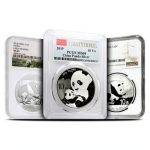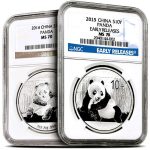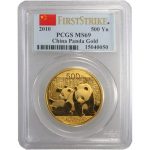The Chinese Mint
30 Gram Silver Chinese Panda Coins (Random Year, Varied Condition)
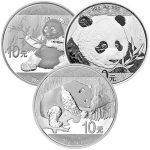
$37.64As low as $36.64
2023 30 Gram Silver Chinese Panda Coins (BU)

$42.34As low as $40.34
2024 30 Gram Silver Chinese Panda Coins (BU)

$42.53As low as $40.53
1 oz Silver Chinese Panda Coins (Random Year)
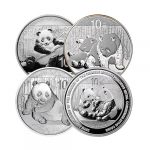
$40.56As low as $40.56
2022 30 Gram Silver Chinese Panda Coins (BU)

$43.55As low as $41.55
2015 1 oz Silver Chinese Panda Coins

$46.56As low as $44.56
2018 30 Gram Silver Chinese Panda Coins
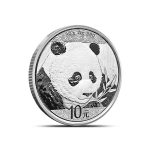
$49.54As low as $49.54
2023 30 Gram Colorized Silver Chinese Panda Coins (BU)

$59.01As low as $59.01
30 Gram Silver Chinese Panda Coins MS70 (Random Year, Varied Label, PCGS or NGC)
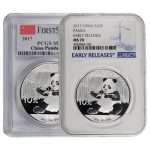
$61.65As low as $61.65
2024 30 Gram Silver Chinese Panda Coins (Gilded, BU)
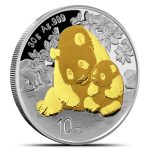
$62.64As low as $62.64
1 oz Silver Chinese Panda Coins PCGS MS70 (Random Year, Varied Label)

$88.67As low as $88.67
1 Gram Gold Chinese Panda Coins (Varied Year, Sealed)

$117.07As low as $117.07
2023 1 Gram Gold Chinese Panda Coins (BU)

$121.77As low as $121.77
2024 1 Gram Gold Chinese Panda Coins (BU)

$126.77As low as $126.77
2004 1 oz Silver Chinese Panda Coins (Sealed)
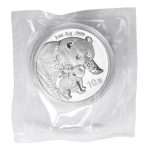
$128.66As low as $128.66
2002 1 oz Silver Chinese Panda Coins (Sealed)
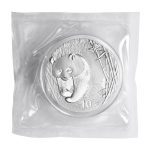
$128.66As low as $128.66
2024 30 Gram Silver Chinese Panda Day and Night Two-Coin Sets (BU, 500 Mintage, Box + CoA)
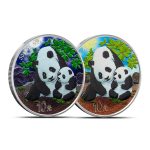
$164.17As low as $164.17
1/20 oz Gold Chinese Panda Coins (Varied Year, Sealed)

$179.25As low as $179.25
3 Gram Gold Chinese Panda Coins (Random Year, Sealed)

$275.32As low as $275.32
2023 3 Gram Gold Chinese Panda Coins (BU)

$295.32As low as $295.32
1/10 oz Gold Chinese Panda Coins (Random Year, Sealed)

$308.50As low as $308.50
1/10 oz Gold Chinese Panda Coins MS69 (Random Year, Varied Label, PCGS or NGC)

$308.80As low as $308.80
3 Gram Gold Chinese Panda Coins MS70 (Varied Year, Varied Label, PCGS or NGC)

$312.09As low as $312.09
1/10 oz Gold Chinese Panda Coins MS70/PR70/PF70 (Random Year, Varied Label, PCGS or NGC)

$388.50As low as $388.50
2023 150 Gram Silver Chinese Lunar Year of the Rabbit Rectangular Coins (Box + CoA)
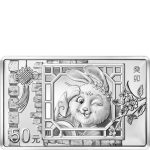
$535.48As low as $535.48
1/4 oz Gold Chinese Panda Coins (Random Year, Unsealed)

$646.27As low as $646.27
1/4 oz Gold Chinese Panda Coins (Random Year, Sealed)
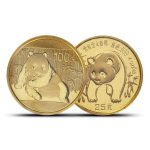
$656.28As low as $646.28
8 Gram Gold Chinese Panda Coins MS69 (Random Year, Varied Label, PCGS or NGC)

$659.21As low as $659.21
8 Gram Gold Chinese Panda Coins (Random Year, Unsealed)
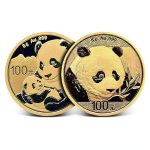
$697.21As low as $697.21
8 Gram Gold Chinese Panda Coins (Random Year, Sealed)

$699.21As low as $699.21
2022 8 Gram Gold Chinese Panda Coins (BU)

$704.21As low as $704.21
2023 8 Gram Gold Chinese Panda Coins (BU)

$704.21As low as $704.21
2024 8 Gram Gold Chinese Panda Coins (BU)

$704.21As low as $704.21
15 Gram Gold Chinese Panda Coins (Varied Year, Unsealed)

$1206.66As low as $1,206.66
1/2 oz Gold Chinese Panda Coins (Random Year, Varied Condition)

$1262.55As low as $1,262.55
2023 15 Gram Gold Chinese Panda Coins (BU)

$1286.66As low as $1,286.66
2024 15 Gram Gold Chinese Panda Coins (BU)
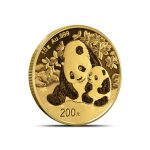
$1291.66As low as $1,291.66
1/2 oz Gold Chinese Panda Coins MS70 (Random Year, Varied Label, PCGS or NGC)

$1434.05As low as $1,434.05
15 Gram Gold Chinese Panda Coins MS70 (Random Year, Varied Label, PCGS or NGC)

$1451.66As low as $1,451.66
2023 1 Kilo Proof Silver Chinese Panda Coins
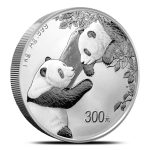
$1577.61As low as $1,577.61
30 Gram Gold Chinese Panda Coins (Random Year, Varied Condition, Unsealed)

$2413.32As low as $2,413.32
30 Gram Gold Chinese Panda Coins (Random Year, Sealed)

$2458.32As low as $2,458.32
2023 30 Gram Gold Chinese Panda Coins (BU)

$2483.32As low as $2,483.32
1 oz Gold Chinese Panda Coins (Random Year, Unsealed)

$2495.10As low as $2,485.10
1986 1 oz Gold Chinese Panda Coins (Sealed)

$2515.10As low as $2,515.10
1 oz Gold Chinese Panda Coins (Random Year, Sealed)
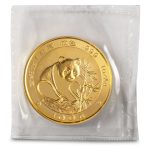
$2535.10As low as $2,525.10
1985 1 oz Gold Chinese Panda Coins

$2530.10As low as $2,530.10
1988 1 oz Gold Chinese Panda Coins (Sealed)

$2530.10As low as $2,530.10
2015 1 oz Gold Chinese Panda Coins (BU)
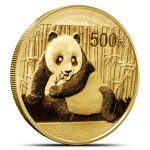
$2535.10As low as $2,533.60
2024 30 Gram Gold Chinese Panda Coins (BU)
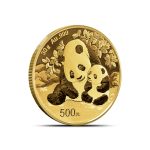
$2538.32As low as $2,538.32
1986 1 oz Gold Chinese Panda Coins

$2555.10As low as $2,555.10
30 Gram Gold Chinese Panda Coins MS70 (Random Year, Varied Label, PCGS or NGC)

$2611.62As low as $2,611.62
2013 1 oz Gold Chinese Panda Coins (Sealed)

$2645.10As low as $2,645.10
2003 1 oz Gold Chinese Panda Coins (Sealed)

$2650.10As low as $2,650.10
2024 50 Gram Proof Gold Chinese Panda Coins

$5017.68As low as $5,017.68
2023 100 Gram Proof Gold Chinese Panda Coins

$9671.07As low as $9,671.07
2024 100 Gram Proof Gold Chinese Panda Coins

$9671.07As low as $9,671.07
150 Gram Proof Gold Chinese Panda Coins (Random Year, Box + CoA)

$12722.52As low as $12,722.52
2023 150 Gram Proof Gold Chinese Panda Coins

$14408.66As low as $14,408.66
2023 1 Kilo Proof Gold Chinese Panda Coins

$94277.74As low as $94,277.74

The Chinese Mint
The Chinese Mint is gaining global prominence in the 21st century through its popular Chinese Panda coin series. The Chinese Mint was originally formed in the late 19th century by the final ruling dynasty and, subsequently, the nationalist movement that resisted the Japanese after the invasion during the Second Sino-Japanese War. Today, the Chinese Mint is operated as a private company that is directly controlled by the People’s Bank of China. It operates a number of facilities across the country, including Shanghai, Shenyang, and Nanjing. Below you’ll find an extensive profile on the mint from Silver.com.
History of Chinese Coinage
Few nations have the minting history of the People’s Republic of China. The world’s second-largest economy is home to some of history’s greatest firsts in minting, such as the first form of paper currency and the first sovereign bullion coin in the modern era to feature annually changing design sets.
The first currency produced in China dates back to between 3,000 and 4,500 years ago. While there was no formalized Chinese Mint at the time, it is proof of a nation and culture that is steeped in the production of currency. China was one of the first civilizations in the world to establish a national currency when the first emperor of China, Qin Shi Huang, outlawed all currency in favor of a national, uniform copper coin. China even introduced the first paper currency in the 9th century.
The modern Chinese Mint has its roots in the downfall of the Qing Dynasty at the turn of the 20th century, which led to the founding of the first national mint in 1896. The Shenyang Mint was founded in 1896 under the name Fengtian Machinery Bureau. When the imperial rulers fell to the Xinhai Revolution, the leaders of the newly-formed Republic of China moved quickly to establish a national mint system.
In 1920, the government opened the Shanghai Mint, but turbulent times were ahead that made it difficult to keep track of the Chinese Mint’s evolution. The Second Sino-Japanese War led to two decades of strife, occupation, and cultural upheaval in mainland China. The founders of the Republic of China fled to the island of Taiwan during Japanese occupation. During the period of occupation, several branch mints were opened that contributed to production.
Following the end of World War II, communist forces led by Mao Tse Tung overthrew the nationalist government, which eventually remained in exile in what is now modern-day Taiwan, operating under the original national government of the Republic of China. Communist leaders closed all of the branch mints opened during Japanese occupation, and began to consolidate the Chinese Mint facilities under the new People’s Republic of China, handing control of coin production to the People’s Bank of China.
China Banknote Printing and Minting Corporation
Today, the Chinese Mint operates under the official name of the China Banknote Printing and Minting Corporation. The company is owned by the government of the People’s Republic of China, and overseen by the People’s Bank of China. Unlike in other nations, the Chinese Mint is not the only facility to produce coinage and other currency for the nation. The People’s Bank of China maintains its own printing and minting operations separate of the Chinese Mint.
The modern Chinese Mint system consists of the Shenyang Mint that opened in 1896, as well as the Shanghai Mint that opened in 1920. In 1985, the Chinese Mint grew to include its Nanjing Mint facility. There are other mints located in Shenzhen and Beijing as well, but it is impossible to determine where many of China’s modern commemorative coins are produced because the Chinese Mint does not use mint marks.
Major Changes in 2016
For the first time in the history of the Chinese Panda coin series, the Chinese Mint made a significant change to the coins. From their introduction through 2015, the coins were struck with the industry standard Troy ounces used to measure the gold and silver content of the coins. In an effort to further establish a unique identity for its bullion coins, and bring them in line with the nation’s use of the Metric system, the Chinese Mint will now strike the Panda Coins with metal content and weight measurements in Grams.
The diversity of the silver and gold coins remains largely untouched by this transition in 2016, with silver and gold coins now available in the following weights:
- 30 Grams: Gold and Silver
- 1 Gram: Gold Only
- 3 Grams: Gold Only
- 8 Grams: Gold Only
- 15 Grams: Gold Only
Design of Chinese Panda Coins
Chinese Panda coins feature the same reverse image each year in both gold and silver. The Chinese Mint alters the specific design on the reverse each year, and has done so every year since the coins were introduced, with the exception of 2001 and 2002. As mentioned earlier, the coins always feature a panda in its natural habitat, but the specific designs change.
For example, the 2015 Chinese Panda coins feature an adult panda as it sits in front of a wall of bamboo. The only engraving now featured on the reverse along with the panda design is the face value of the coin, along with the Chinese symbol for panda. As of 2015, the Chinese Mint stopped engraving the purity and weight on its panda coins.
The obverse side of the coins has featured the same image since the coins were introduced in 1982. Beijing’s Temple of Heaven is featured on the obverse every year, along with the Chinese characters that bear the name of the complex. Literally translated as the Altar of Heaven, the building is actually part of a complex of religious structures that imperial leaders used to visit to pray for a good harvest across the nation.
Background on the Chinese Panda Program
Without the question, the most popular coin on the international stage from the Chinese Mint is the Chinese Panda. Like the American Eagle and the Canadian Maple Leaf, the Chinese Panda coin is a sovereign bullion product that bears images representative of the people and culture of China. Similar to these programs, the Chinese Panda is struck on an annual basis as an official sovereign coin of the nation, and features design sets that represent a stable motif from year to year.
However, while other programs use the same design feature on sovereign bullion coins each year, the Chinese Mint was the first to introduce a bullion coin that bears a new design each year on the reverse side. While the motif always features the native panda and its home environment, the specific design changes each year. Some years include designs with multiple pandas, while others depict just one panda.
The first gold coin from the Chinese Mint was released in 1979 to commemorate the 30th anniversary of the founding of the communist People’s Republic of China, but it was just three years later that the Chinese Panda was introduced. The coin series started in 1982 with a gold bullion coin, and quickly grew to include several other options.
Gold and Silver Chinese Panda Coins
Introduced in 1982, the Gold Chinese Panda is the official gold bullion coin of the nation. It started with a total of four weights available: 1 oz, ½ oz, ¼ oz, and 1/10 oz The following year in 1983, the Chinese Mint expanded the coin series to include a 1/20 oz coin. The Chinese Mint also introduced a number of one-time or infrequent sizes in the gold series, such as the 1 Gram Gold Chinese Panda in 1991 (the first of its kind in the world) and the occasional 5 oz, 12 oz, and 1 kilogram coins.
Gold Panda coins have a face value listed in ¥ (Yuan). Each coin is considered legal tender and bears a face value that correlates to its total weight based upon the 1 oz coin as a baseline. The 1 oz Gold Chinese Panda has a face value of ¥500.
When the 1 Gram Gold Chinese Panda was struck, it had a face value of ¥3. The face value of each of the coins was much lower from introduction in 1982 until 2000, and the value listed above are representative of those coins produced since 2001. All Gold Panda coins feature .999 fine gold.
Again however, these weights and associated face values represent the status of the Gold Chinese Panda coins through 2015. The introduction of the Gram weights in 2016 means the same face values are in use, but are associated with different coins weighed in Grams now rather than Troy ounces.
After the successful introduction of the Gold Chinese Panda coin, the Chinese Mint unveiled the Chinese Silver Panda as a counterpart to its popular gold series. The silver coin has a much different history than that of its gold counterpart though. The Silver Chinese Panda was first introduced in 1983 as a proof coin with 1 troy ounce of .900 silver. The coins were issued in the 1 oz weight from 1983 to 1985, and then discontinued for 1986. When the coin’s returned in 1987, it was again available only in a 1 troy ounce weight, but the purity had been increased to include sterling silver, or the equivalent of .925 fine silver.
In 1988, the Silver Chinese Panda gained stability in production and the purity was increased to .999 fine silver. Although no 1 oz. coins were struck in proof this year, the stage was set for the program to move forward with regular production. Beginning in 1989, the Silver Chinese Panda was struck in both bullion and proof versions, with available weights including 1 kilogram, 12 oz, 5 oz, 1 oz,, ½ oz, and ¼ oz.
Like the Gold Chinese Panda, the Silver Chinese Panda is an official bullion product of the nation with status as legal tender. The face value of the Chinese Silver Panda coin starts at ¥10 for the 1 troy ounce coin.
As with the Gold Chinese Panda Coins, these Silver Chinese Panda coins now exhibit weights in Grams rather than Troy ounces. Currently there is only the one weight available for the Silver Panda as the Chinese Mint continues the changeover to Grams in the coming years.
Contact Us with Questions
If you have further questions about the Chinese Mint or its popular Chinese Panda coin program, please don’t hesitate to contact Silver.com. Our customer service team members are available on the phone at 888-989-7223, online using our live web chat, and via our email address.


